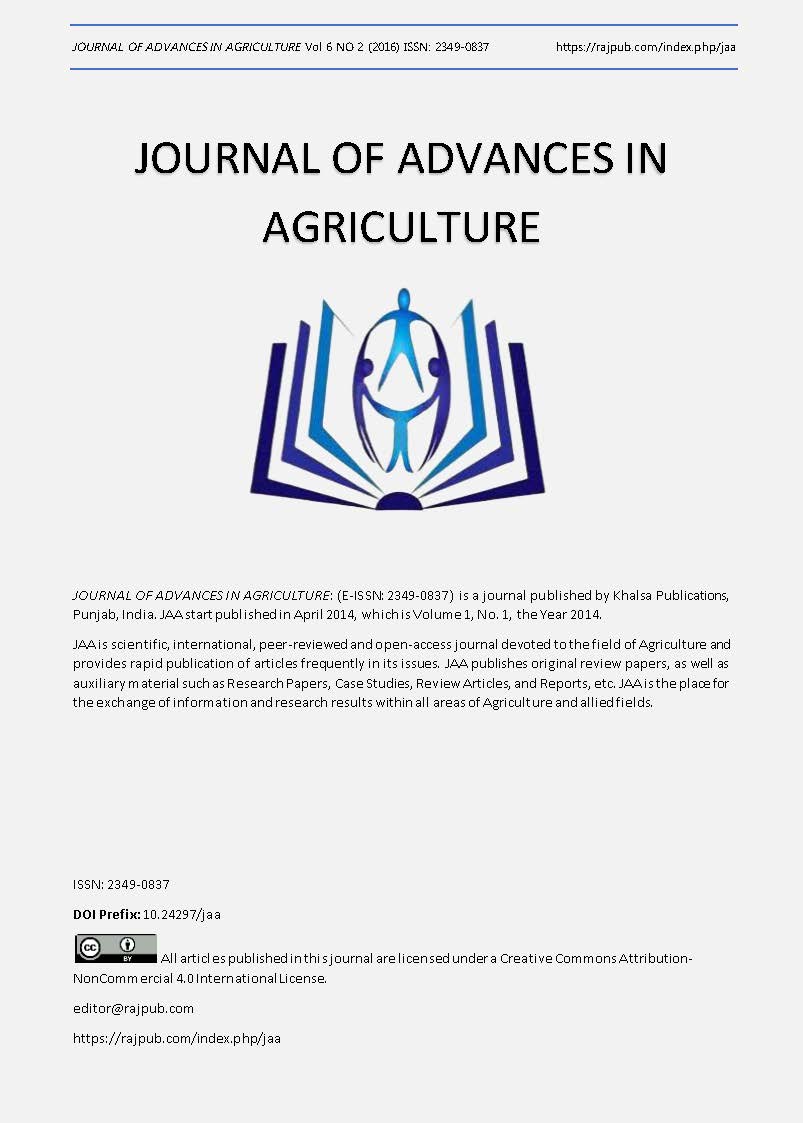Estimating nitrogen contents of apple leaves based on hyperspectral parameter models at different phenophases
DOI:
https://doi.org/10.24297/jaa.v6i2.5377Keywords:
Different phenophases, Apple leaves, Nitrogen contents, Hyperspectral parametersAbstract
The objective of the paper is to explore the best phenophase for estimating the nitrogen contents of apple leaves, to establish the best estimation model of the hyperspectral data at different phenophases. It is to improve the apple trees precise fertilization and production management. The experiments were done in 20 orchards in the field, measured hyperspectral data and nitrogen contents of apple leaves at three phenophases in two years, which were shoot growth phenophase, spring shoots pause growth phenophase, autumn shoots pause growth phenophase. The study analyzed the nitrogen contents of apple leaves with its original spectral and first derivative, screened sensitive wavelengths of each phenophase. The hyperspectral parameters were built with the sensitive wavelengths. Multiple stepwise regressions, partial least squares and BP neural network model were adopted in the study. The results showed that 551 nm, 716 nm, 530 nm, 703 nm; 543 nm, 705 nm, 699 nm, 756 nm and 545 nm, 702 nm, 695 nm, 746 nm were sensitive wavelengths of three phenophases. R551+R716, R551*R716, FDR530+FDR703, FDR530*FDR703; R543+R705, R543*R705, FDR699+FDR756, FDR699*FDR756and R545+R702, R545*R702, FDR695+FDR746, FDR695*FDR746 were the best hyperspectral parameters of each phenophase. Of all the estimation models, the estimated effect of shoot growth phenophase was better than other two phenophases, so shoot growth phenophase was the best phenophase to estimate the nitrogen contents of apple leaves based on hyperspectral models. In the three models, the 4-3-1 BP neural network model of shoot growth phenophase was the best estimation model. The R2 of estimated value and measured value was 0.6307, RE% was 23.37, RMSE was 0.6274.
Downloads
Downloads
Published
How to Cite
Issue
Section
License
 All articles published in Journal of Advances in Linguistics are licensed under a Creative Commons Attribution 4.0 International License.
All articles published in Journal of Advances in Linguistics are licensed under a Creative Commons Attribution 4.0 International License.




